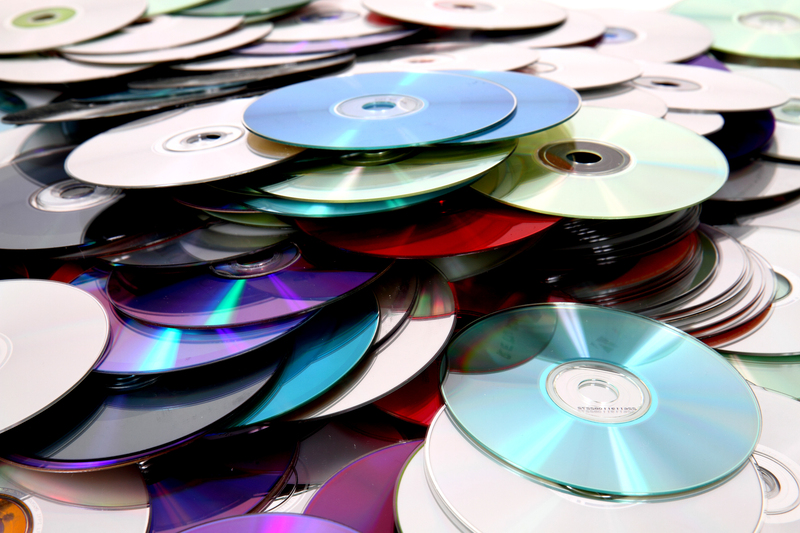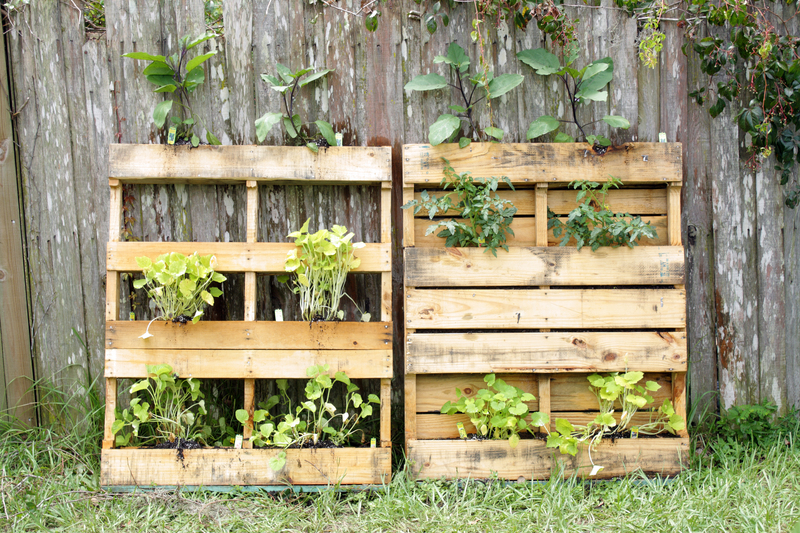Tips for Properly Recycling Metal Cookware
Recycling is essential in today's world, as it helps conserve resources and minimize environmental impact. Metal cookware recycling is a key aspect of sustainable kitchen practices. Knowing how and where to recycle metal pots, pans, and baking trays ensures that these items are responsibly disposed of, instead of ending up in the landfill. This comprehensive guide will provide actionable tips for properly recycling metal cookware, explain the significance of doing so, and outline the steps to make your recycling journey easy and effective.
Why Recycling Metal Cookware Is Important
Metal is a finite natural resource. Recycling cookware not only conserves raw materials but also saves energy and reduces greenhouse gas emissions. Here are some crucial reasons to prioritize metal cookware recycling:
- Conserves natural resources: Recycling metal uses less energy compared to producing new metal from ore.
- Reduces landfill waste: Metal cookware does not decompose and can remain in landfills for centuries.
- Lowers pollution: Manufacturing and mining metal produce pollutants; recycling helps reduce this environmental burden.
- Supports circular economy: Recycled metal can be transformed into new products, giving your old pots a second life.
Metals Commonly Found in Cookware
Understanding the types of metal used in kitchenware is vital for efficient recycling. The most common metals found in cookware include:
- Stainless Steel - Durable, rust-resistant, commonly used in pots, pans, utensils, and mixing bowls
- Aluminum - Lightweight, often seen in baking trays, pans, and cookware handles
- Copper - Excellent heat conductor, frequently found in high-end or specialty pots
- Cast Iron - Heavier, often used for skillets, Dutch ovens, and griddles

Prep Steps Before Recycling Metal Cookware
To recycle cookware responsibly, certain preparatory actions can boost the chances that your old kitchenware will be accepted and properly processed.
1. Clean Thoroughly
Any food residue, oil, or burnt-on grime can affect the recycling process. Wash cookware with soap and water, and scrub off stubborn messes. A clean item is less likely to be rejected by recycling centers.
2. Remove Non-Metal Parts
*Many metal pots and pans have plastic, wood, silicone, glass, or rubber handles and inserts.* These non-metal components should be removed wherever possible. If you cannot detach them, contact your local recycling facility to check if they can process items with minor non-metal parts.
- Screw off removable handles
- Pry out silicone grips or plastic knobs
- Cut away rubber or composite accessories
3. Inspect for Coatings
Many cookware items, especially non-stick pans, have coatings like Teflon or enamel. These can complicate recycling if they are not removed. *Some facilities accept non-stick pans, but you may need to search for a specialized metal recycler.*
- Check your cookware for *non-stick, ceramic, or enamel coatings*
- If possible, find a specialty recycler for coated cookware
- Ask the recycling center about any restrictions or requirements
Where and How to Recycle Metal Cookware
There are several options available for recycling old cookware. Not every item can go into your curbside recycling bin, but almost all metal cookware can be diverted from landfills through the right route.
Community Recycling Centers
Local recycling centers or municipal facilities often accept scrap metal. However, not all accept household cookware. *Before visiting, call ahead or check their website for guidelines specific to metal kitchenware recycling.*
Scrap Metal Yards
A scrap metal yard is generally the best bet for disposing of pots and pans, including those with minor wear or non-working condition. These facilities process and separate different metal types for recycling.
- Ensure items are clean and stripped of as many non-metal components as possible
- Ask if they accept coated and non-stick pans
- Some scrap yards may even pay a small fee for pure metal cookware
Retailer Take-Back Programs
Certain kitchenware brands and big-box retailers offer take-back or recycling programs. These initiatives might accept old cookware when you buy new items or hold regular recycling events.
- Check with stores like Williams Sonoma, Sur La Table, or Bed Bath & Beyond for trade-in days
- Look out for local events celebrating Earth Day or similar sustainability campaigns
Curbside Recycling and Bulk Collection
Most municipal curbside recycling programs do not accept metal cookware in regular bins, but some offer periodic bulk collection days. Confirm whether your city includes metal cookware in bulk/recycling pickups and how to prepare your items.
Donating or Upcycling if Suitable
If your cookware is still usable (no holes, cracks, or loosened handles), consider:
- Donating to charity shops, shelters, or community kitchens
- Offering them via neighborhood groups or online marketplaces
*Well-loved but still-functional cookware may be welcomed by someone who can't afford new pots and pans.*
You can also upcycle old cookware into creative items, such as planters, organizers, or decorative pieces for your home or garden.
Key Tips and Best Practices for Recycling Metal Cookware
- Double-check local recycling policies: Not all cities process scrap metal in the same way. Always review guidelines before recycling metal cookware.
- Group similar metals: If possible, separate aluminum, stainless steel, and copper items -- this may help recyclers process your items more efficiently.
- Remove excessive coatings: Avoid sending heavily coated, painted, or non-stick cookware to facilities that require bare metal.
- Don't place large items in regular curbside bins: Pots and pans can damage recycling machinery if not processed properly.
- Label materials if requested: If your recycling center asks for it, label bags or boxes by material type (e.g., "Aluminum Cookware").
- Don't forget about lids: Most metal lids are also recyclable, so include them if they are made of pure aluminum, stainless steel, or iron.
Frequently Asked Questions on Recycling Metal Cookware
Can I Recycle Non-Stick Pots and Pans?
*Non-stick coatings like Teflon make recycling more complicated.* Some recycling centers specifically accept non-stick cookware, while others reject it. Specialized scrap metal dealers are your best bet. Contact facilities in advance for their recommendations. Alternatively, consider upcycling these items at home.
How Do I Know What My Cookware Is Made Of?
Examine the bottom or handles for material stamps like "stainless steel," "aluminum," or "iron." Most brands indicate the type. *If unsure, try a magnet. Stainless steel and iron are magnetic, but aluminum is not.*
Should I Remove All Screws and Handles?
If these are made of plastic, wood, or rubber, remove as much as possible. *A little remaining material is usually okay, but double-check requirements with the recycler.* The cleaner and more metal your item is, the greater the chance it will be processed efficiently.
Can Broken or Severely Damaged Cookware Be Recycled?
Absolutely. Most recycling centers and scrap yards are only interested in the metal content--condition is not important.

Creative Upcycling Ideas for Old Cookware
Before recycling, consider reusing or repurposing metal cookware. Here are some fun ideas:
- Turn old frying pans or saucepans into quirky wall clocks
- Use large, shallow pans as planters for indoor herbs
- Drill holes in colanders to create hanging garden baskets
- Transform pot lids into decorative mirrors or art
- Stack and weld pans to create garden sculptures or bird baths
*Upcycling gives new utility and charm to old items--plus, it reduces landfill waste!*
Summary: The Responsible Route for Old Metal Cookware
Recycling your old pots, pans, and baking trays helps protect the environment, support sustainable industries, and reduce landfill pressure. By prepping cookware, choosing the right recycling option, and adhering to local regulations, you'll ensure your kitchen cleanout has a positive, lasting impact.
Key steps for successful cookware recycling:
- Clean and remove all non-metal attachments
- Check for coatings and consult recycling centers for acceptance
- Take items to a qualified scrap metal recycler, drop-off point, or participate in a retailer's recycling program
- Consider donation or creative reuse before recycling
By following these tips for properly recycling metal cookware, you'll keep valuable materials in circulation, reduce your environmental footprint, and inspire others in your community. Together, small actions in the kitchen can make a big difference for our planet!
